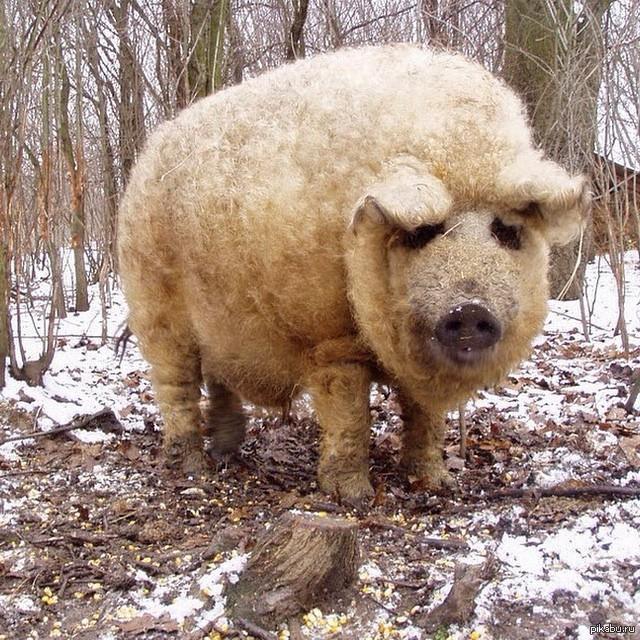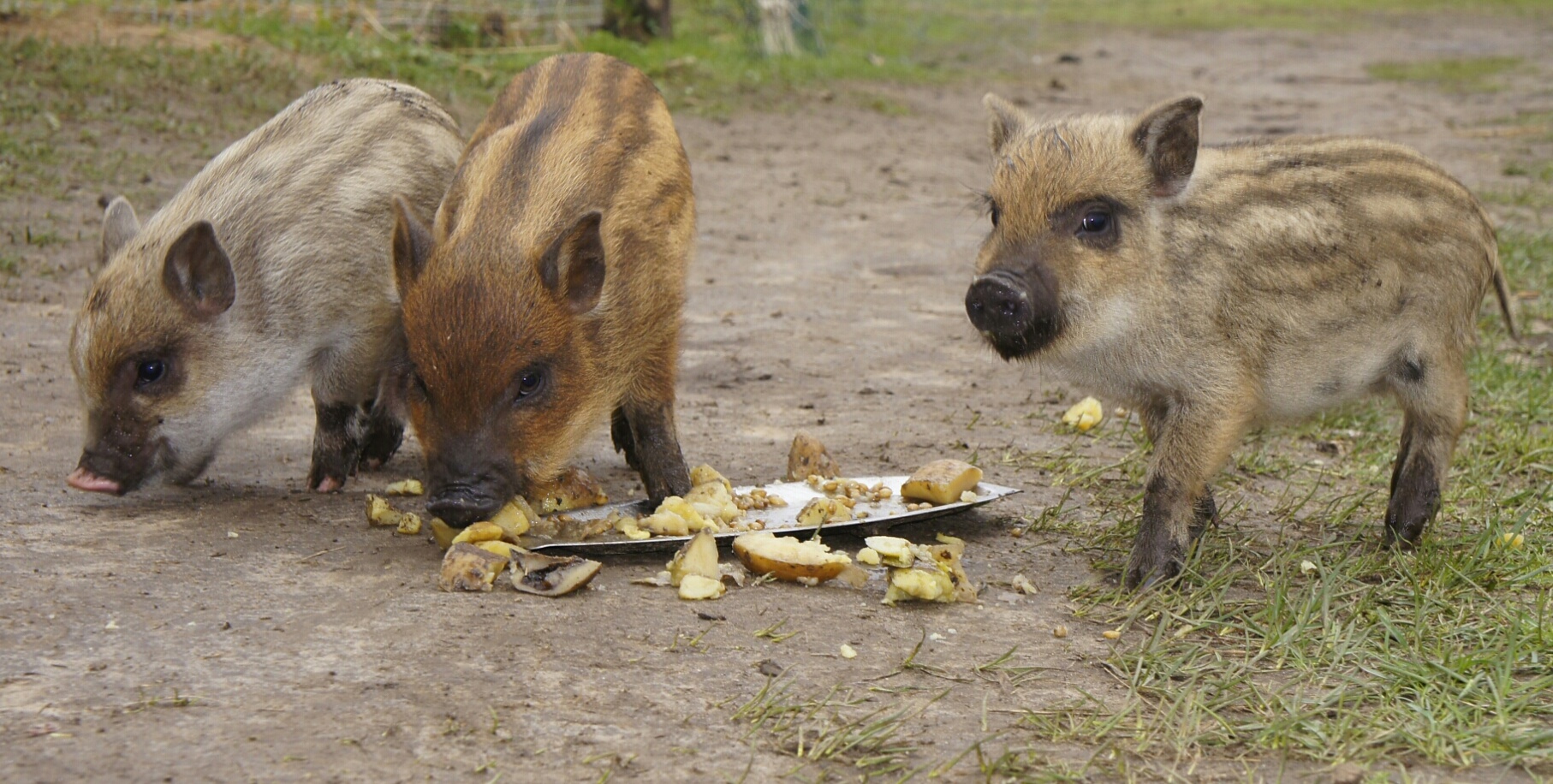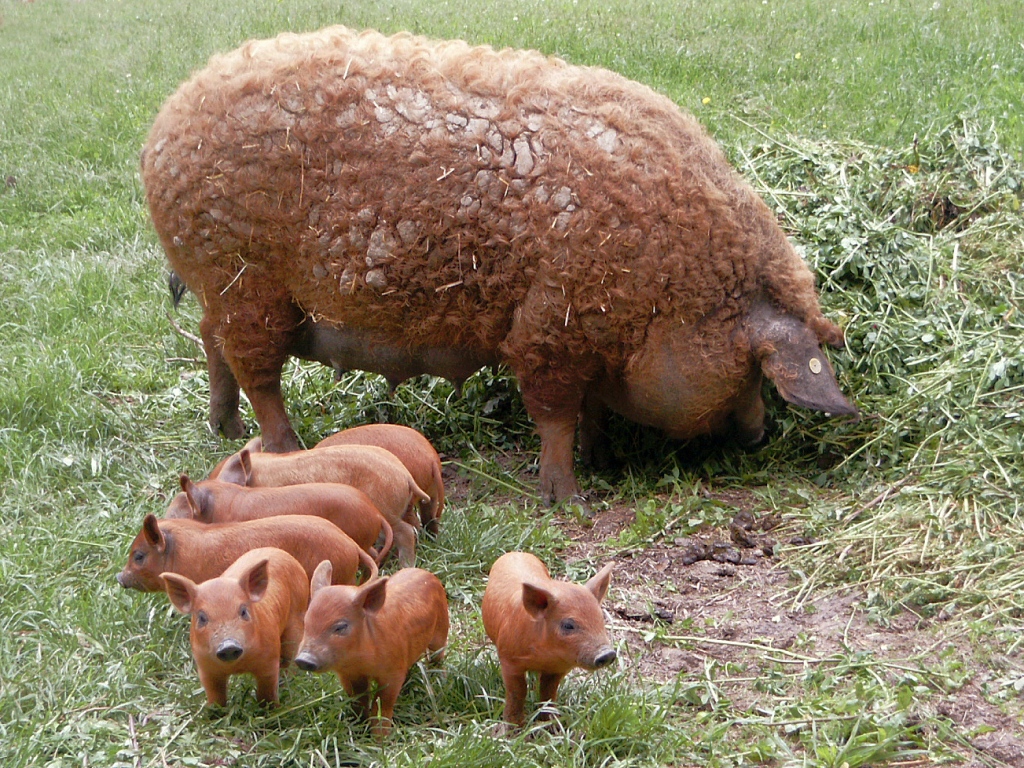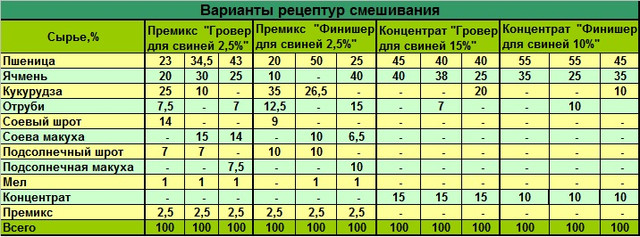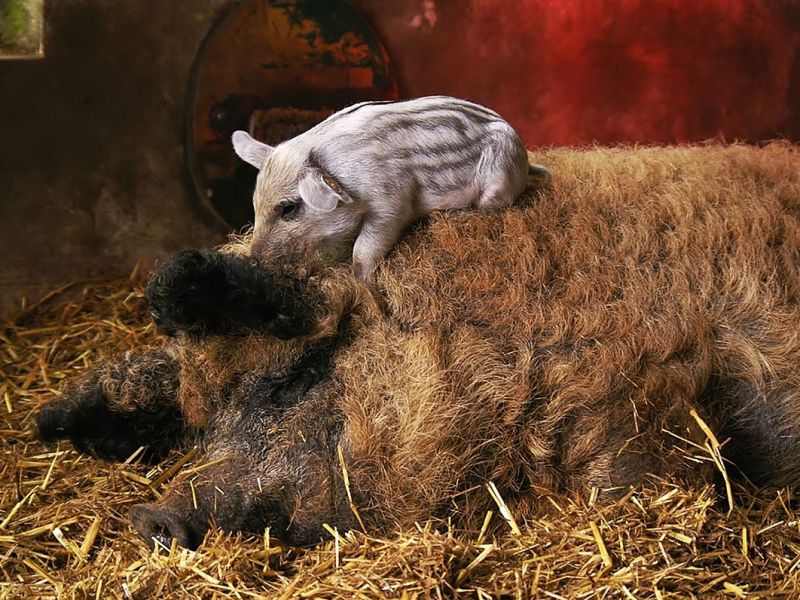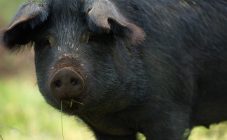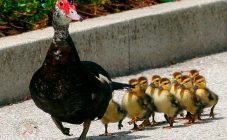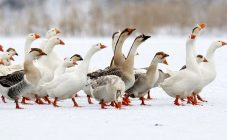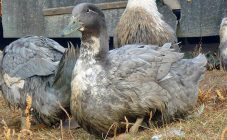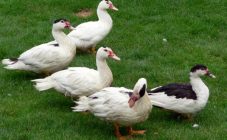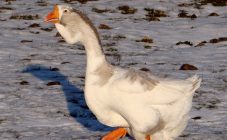Content:
Some animals are born by natural selection, but many breeds are helped by humans. The rarest of its kind today is the hairy pig. In the scientific world and among connoisseurs of pig breeds, it is called "Hungarian mangalitsa". As the name implies, this breed of pigs was bred in Hungary. This breed was not bred by chance. She had to become exactly the animal that is adapted to breeding and growing in critical weather conditions and, moreover, unpretentious in food.
History of the breed
A special feature that distinguishes the Hungarian mangalitsa from other pigs is its thick long coat. In the general register of pig breeds, the Hungarian mangalitsa was registered in the 30s of the 19th century. At that time, mixing the Hungarian pig with other breeds was strictly forbidden. But even this approach of the authorities to saving the Hungarian breed of pigs did not help, as a result, it almost disappeared from the face of the earth. In the 80s of the 20th century, breeders from Hungary managed to restore this breed. They caught several representatives of the Mangalitsa, which were wild and began to feed.
The Hungarian pig came to our country en masse. Initially, the breeding of curly pigs was carried out in the Moscow region and in the Caucasus. Currently, the curly pig in Russia is becoming very popular.
Features of the breed
The main feature of the Hungarian mangalica is that it is covered with wool. There are other distinctive features:
- Low fertility. A pig produces a maximum of five to six hairy piglets. A larger number is considered a defect of the breed and speaks of impure blood.
- Unpretentiousness in food.
- The meat is very tasty compared to other breeds of pigs.
- It sheds profusely.
- The piglets have a pair of longitudinal stripes along the ridge, making them look like small wild boars.
An adult curly pig is short due to short legs, and it also has a large and elastic belly. The body and skeleton of the pig are well developed. Sexual maturity occurs at the end of the first year of life. Pig gestation generally lasts 116-120 days.
Sheep pigs are divided into three main types by color:
- white;
- red;
- black and white, or "swallow".
The second most important feature of the breed is the presence of a black spot under the ears of the animal. Farmers among themselves call it "Wellman's spot". Its dimensions are generally 3-5 centimeters in diameter. It is this that is the distinctive feature of the breed. In addition, a dark skin around the eyes, snout, hooves, nipples and under the tail speaks about the pig's pedigree.
Growing features
There are no special requirements for the rearing and further maintenance of a hairy pig and hairy piglets. They are easy to clean. These pigs do not need a warm room for their well-being; it is enough to build a barn with several windows. They do not need to have additional vaccinations, and they eat almost everything.The Hungarian downy pig is very fond of feasting on pumpkin, potatoes, beets, various roots, freshly cut grass and various weeds, as well as mollusks (snails), fish leftovers.
In order for the Hungarian breed of pigs to feel good, and curly pigs to grow and develop in accordance with breed standards, they need to be grazed on pastures under the open sky near the reservoir. Moving the pig and piglets is necessary.
Feeding features
As mentioned above, the breed of pigs with wool is omnivorous. While grazing, they are able to find food for themselves. In addition, various vegetables and even meat can be included in the pig's diet. But professionals in Hungarian breeding advise not to give a lot of food to these animals.
After the sow has farrowed, she is kept indoors with the babies. For the young to be healthy, it is necessary that he receives all the vitamins and elements with his mother's milk.
With the minimum cost of feeding, the Hungarian curly pig can gain weight about 700 kg. In the summer, there is enough pasture for grazing, while in the winter you need to feed the animals. Feeding babies begins at the age of 4-5 days, but only with barley after heat treatment and a chatterbox. Also, for good growth, animals need to be additionally given lime, and best of all, chalk, red clay and bone meal. Mangalians drink a lot, which is why water should be freely available around the clock. Babies begin to feed on their own at the age of 3 weeks. At the age of one month, baby stripes disappear. It is at this age that it is better to take babies away from the sow.
Hungarian mangalica care
In order for the livestock of this breed to be healthy, there is no need to overfeed, it is worth regularly checking the long coat for the presence of various parasites. When they appear, sanitize the entire livestock to avoid further contamination.
There are just a few rules, the observance of which will provide woolen pigs with excellent health:
- Before you start pigs, you need to prepare places for keeping them in summer and winter.
- The premises and grazing should be provided with collectors for faeces so that animals are not tormented by fumes.
- Build an open-air pasture. If it is not there, there is a high probability that the pigs will develop rickets.
- Conduct monthly disinfection of the pig shed and other premises where pigs and auxiliary equipment are kept.
- In winter, provide animals with daily walks in the fresh air.
- The moisture content in the pigsty should be no more than 70 percent. Pigs and young animals must not be kept in drafts and damp
- After each feeding, wash the feeders.
- If the pigs are bred for meat and lard, castration should be done at the age of one month.
To get high-quality offspring of the Hungarian fluffy pig breed, it is worth considering several features that many connoisseurs of this breed talk about. It is necessary to have pigs as soon as the first heat after farrowing has begun. In rare cases, the sow may not show this desire. Causes:
- Mating time is incorrect;
- The sow suffers from a disease.
The hunting time for woolen Hungarians begins approximately after the first decade after farrowing. It is the representatives of this breed that are considered one of the most accurate in this regard. Hunting time for the Hungarian mangalitsa can come even 60 days after giving birth.
If you try to mate a sow with a boar, the first may not accept it.
In case of illness, you need to contact your veterinarian. It happens that the female lets the boar in, but after intercourse "bachelor". This indicates a hormonal disorder in the sow's body. In this case, you must call a doctor.
Pros and cons of the breed
Disadvantages of the breed:
- The main disadvantage is that this breed of pigs is rare for our country. That is why it is very difficult to acquire a purebred Hungarian mangalitsa, and such individuals are not cheap either. Hybrids are mainly found on the territory of Russia.
- For their maintenance, it is necessary to walk in the open air. A maximum of 30 pigs can be kept per hectare.
- Sows are not very fertile.
This breed has many more advantages than disadvantages. The positive characteristics of shaggy pigs include:
- Warm rooms are not needed for their maintenance. The fur perfectly warms them in bad weather.
- Thanks to their thick wool, mangalitsa perfectly tolerate severe winters.
- Unpretentious in feeding.
- They have strong immunity and are resistant to various diseases.
- The nature of the pigs is good-natured, docile not only to humans, but also to other representatives of the fauna.
- Since hairy pigs can be grazed for a long time, keeping them economically beneficial for any farmer.
- The meat and lard of these pigs is recognized worldwide as a delicacy, and due to the fact that this breed is rapidly gaining weight, breeding is considered economically profitable.
Hungarian mangalitsa is a rare breed of pigs with exceptionally strong immunity and surprisingly tasty healthy meat. Its breeding and maintenance is not worth a lot of financial costs, but buying a purebred individual in our country is quite problematic. But this breed has every chance of becoming the best pig breed in the world and in our country.
